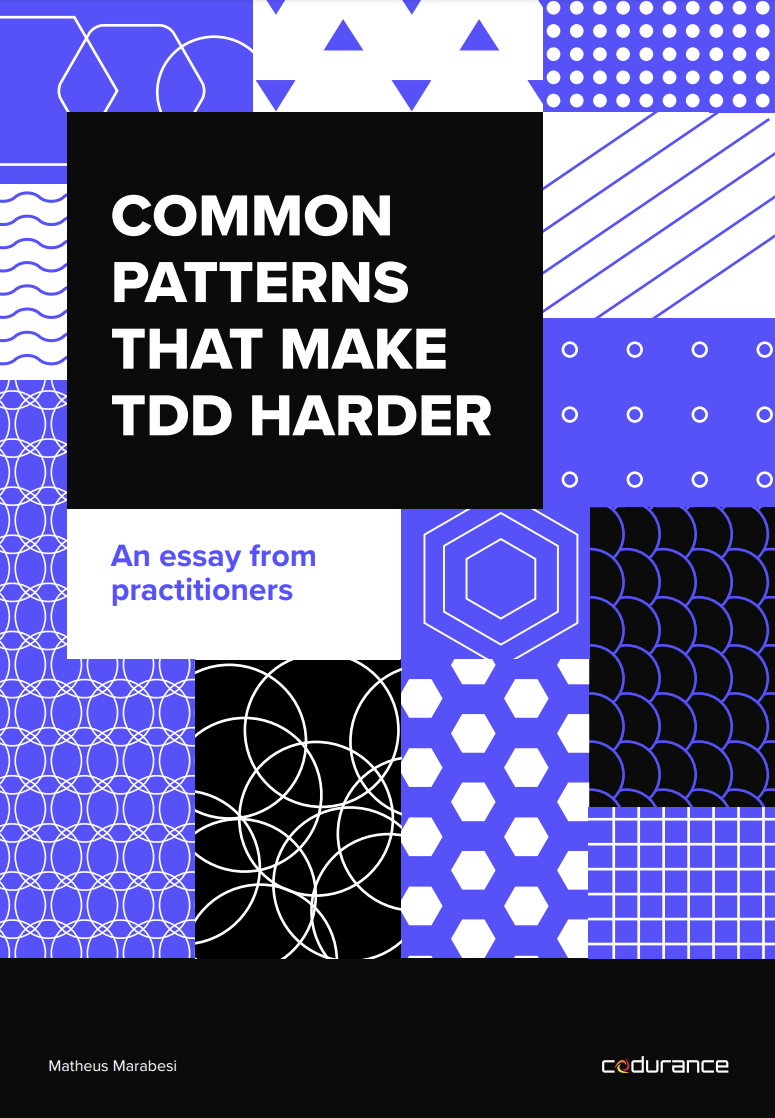Hello!
Hello there! I am an aspiring researcher focused on TDD, a close friend of software testing. My research is focused on investigating the influence of Test-Driven Development (TDD) on the generation of test smells. This entails examining various aspects of software development under TDD, including organizational factors, team dynamics, and technical practices. I also developed Testable, a gamified tool that aims to improve the unit test teaching, trying to change the boring perception that developers have in learning how to test their code. Currently I am working as a Software craftsperson at Codurance, changing the way people build systems and trying to close the gap between academia and industry. Want to stay tuned on software development? Sign up on my newsletter "Papers of the week".What are you looking for?
Find out the reviews of books that are key for practitioners.
Curated content
Start to finish
AZ-900 and AZ-204
About me
Academic background
- PhD - Software engineering (focused on software testing) - CURRENT
- MSc - Software engineering (focused on software testing)
- MBA - Software development and game development for mobile applications
- MBA - Software engineering
- Degree - Technology analysis and systems development
EN publications
- Behaviors To Avoid When Practicing Pair Programming
- TDD: From Katas to Production Code
- The Never-Ending Debate: For Loops in Test Cases or Multiple Assertions
- TDD Knowledge Book- Insights from the first TDD Conference
PT-BR publications
- Matheus Marabesi: Testing - 7Masters
- Matheus Marabesi: Migrando de Mysql para MongoDB - 7Masters
- Nesse novo mundo da Internet das coisas, nos perguntamos: e o PHP? - iMasters
E-books
Books
Certifications
Keep in touch
Recent posts
The differences between frontend and backend for TDD
TDD (Test-Driven Development) applies equally to both client-side and server-side applications, despite initial literature focusing on Java, a primarily server-side language. Initially, client-side testing was undervalued, partly due to influential works like “Clean Architecture” by Uncle Bob, which minimized the importance of UI testing. However, the industry has since evolved, recognizing the importance of client-side testing with tools like QUnit for jQuery, jest/mocha for modern applications, jasmine for Angular, and testing-library for ReactJs. Client-side and server-side applications have distinct roles, with the former focusing on responsiveness and browser APIs, and the latter on storage systems and HTTP requests.
Searching for the type of tests
Discover the nuances of different types of testing and its definition based on multiple authors.
Fetching data with ReactJs using Pokemon API
useEffect has been used to synchronize external effects with the internal reactjs component state. Effects vary based on their source. it could be an API, an update made in the DOM or any other source that comes from the outside of a reactjs component lifecycle.
What is testing? - A brief introduction to software testing
You can’t build great software without testing it thoroughly. Testing is a crucial step in the development process, with different teams using various approaches and types of tests. This blog post dives into the world of testing, explaining its role in the software lifecycle through different “testing pyramids” and categories. We’ll explore where testing fits in the grand scheme of things.
A gentle introduction to TDD
TDD is a three-stage process (Red, Green, Refactor) that improves code quality, collaboration, and development. It reduces the gap between decision and feedback during programming. Check out a YouTube playlist for more information.
Opening a new area of research: The intersection between TDD and test smells, where are we and where are we going to?
The current focus is on developing a framework to analyze the impact of TDD practice and test smells on the codebase, emphasizing the context in which TDD is practiced. While tools have been developed for identifying test smells mainly in the Java ecosystem, there’s still a need to adapt these tools for other programming languages. One of the main challenges is integrating various areas of knowledge, such as team and organizational settings, into this framework.
What would I do if I had to learn Laravel again after years of not using it?
For a long time, I used Laravel to build web apps and APIs for my professional career. I spent at least 4-5 years writing PHP apps with Laravel, which led to a book and later on hosting two conferences in Brazil, one in 2016 and the other in 2017. Today, I would like to share what I would focus on if I had to relearn Laravel from scratch, and this post is an exercise that I am doing with that in mind. Be aware that it has been a while since I touched Laravel, and any inputs that might improve...
Code retreat 2023 - a debriefing
Unleash your coding potential with a code retreat, an immersive day of learning, collaboration, and technical growth. Join fellow developers as you tackle coding challenges, master new techniques, and forge valuable connections. Experience the transformative power of refactoring and emerge with enhanced skills, ready to elevate your coding prowess.
The history of test doubles
Test doubles are objects that are used to replace real objects in tests. They are used to isolate the code being tested from its dependencies, to simplify the code being tested, or to speed up tests. There are five main types of test doubles mocks, stubs, fakes, dummies, and spies. Mocks are used to simulate the behavior of real objects. Stubs are used to provide canned responses to method calls. Fakes implement the same interface as real objects but with simplified or simulated behavior. Dummies do nothing. Spies track how real objects are being used.
Product Management For Dummies a Review
An opinionated review of the book Product Management for Dummies, based on years of experience as a developer.






















